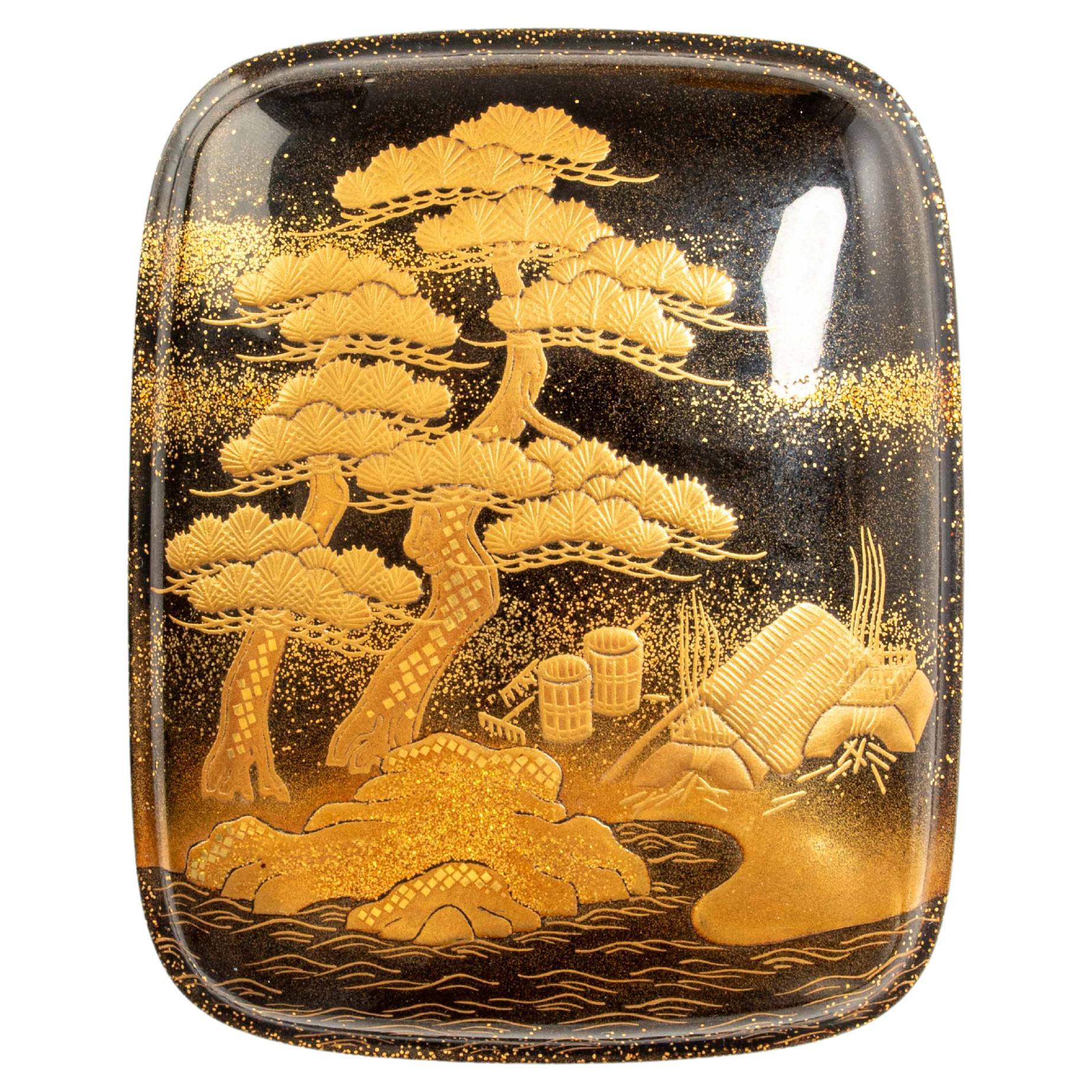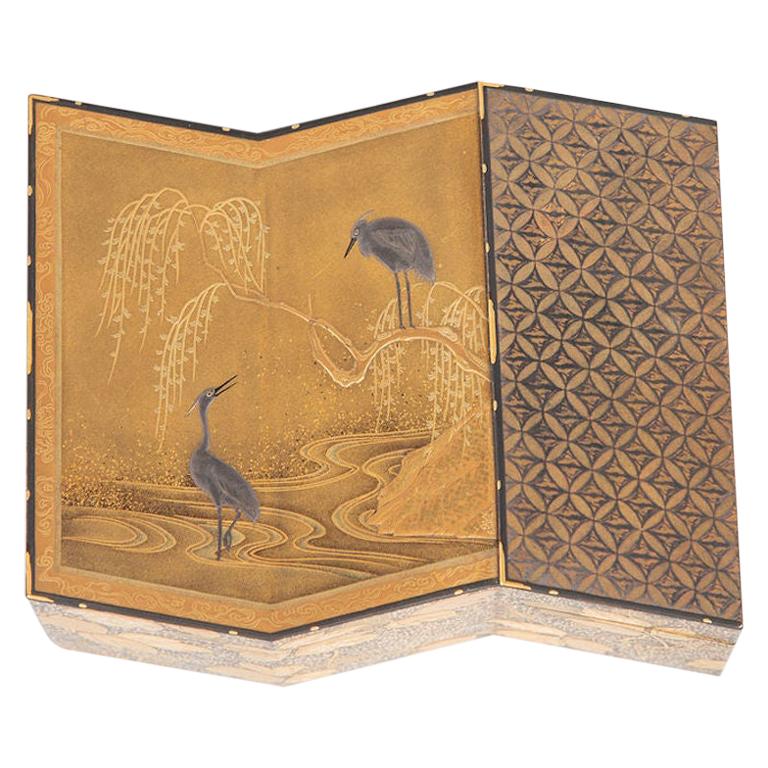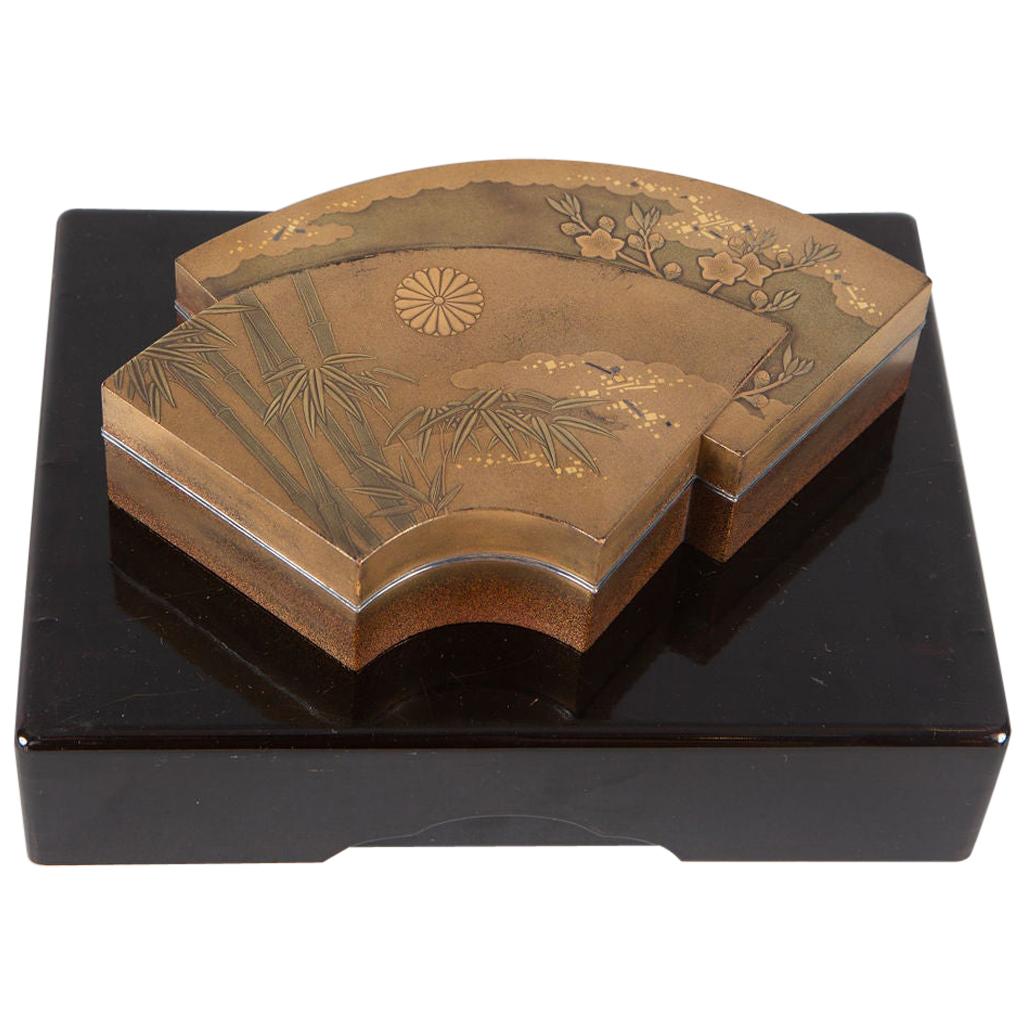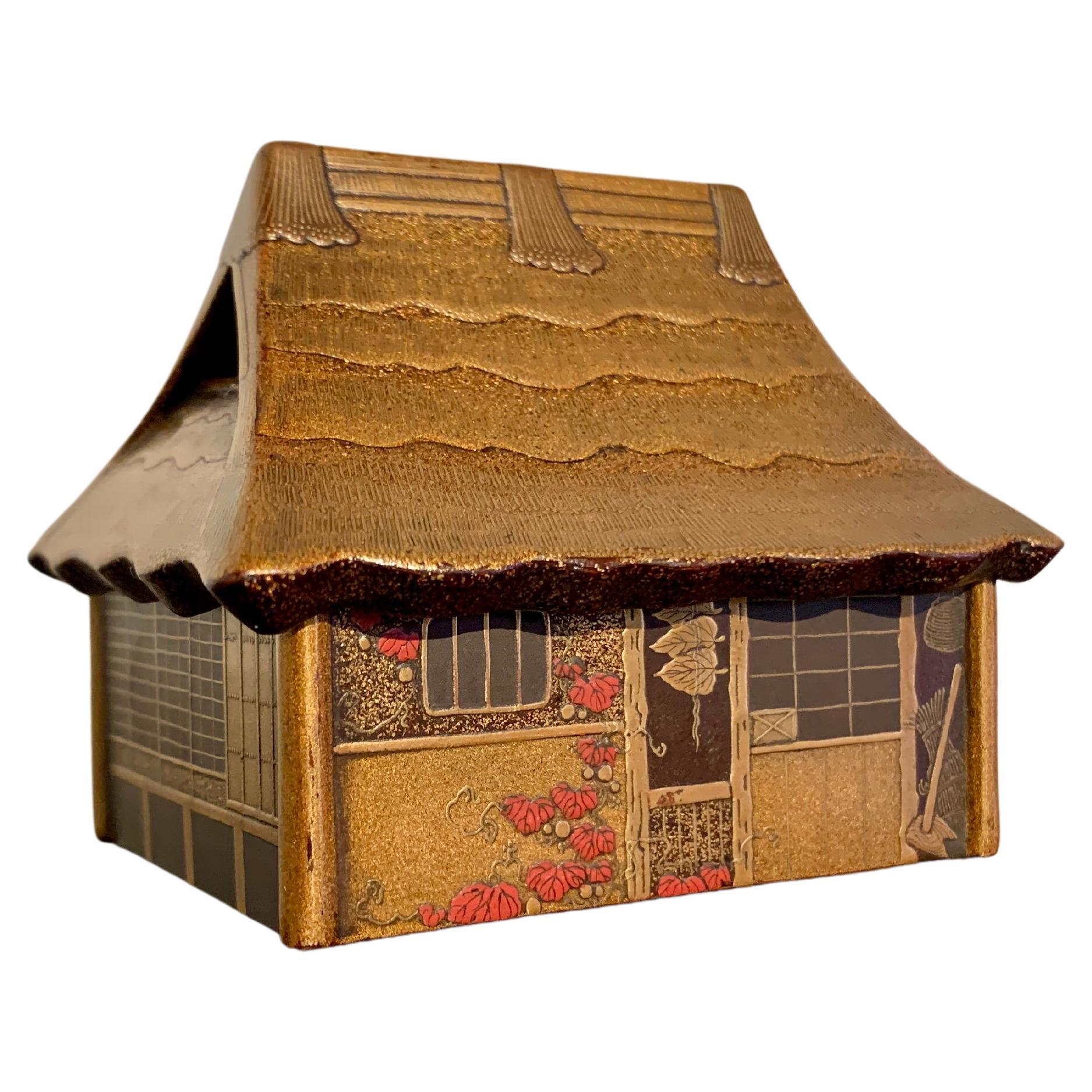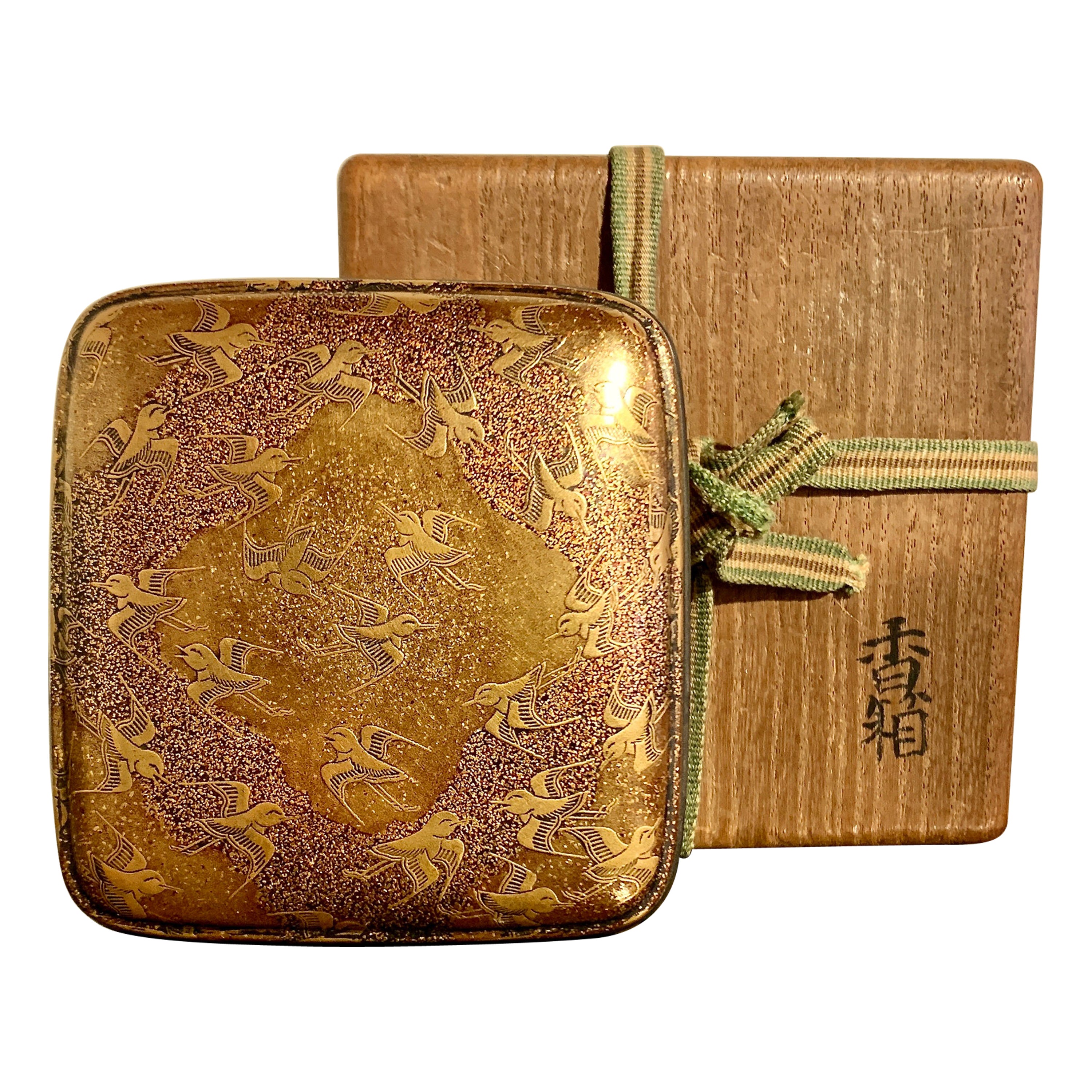Items Similar to Kogo in the Shape of a Deer
Want more images or videos?
Request additional images or videos from the seller
1 of 6
Kogo in the Shape of a Deer
About the Item
Hiramaki-e lacquer, nashiji and fundame
Edo period, 19th century
Length: 10.5 cm, height: 6.5 cm
Since the Heian period, The theme of deer and autumn plants has been utilized in poetry and art to symbolize autumn. This unusual kogo, a small incense container used during the tea ceremony, depicts the animal crouching, one leg extended, decorated just so with maple leaves, yellowing for the autumn season.
- Dimensions:Height: 2.56 in (6.5 cm)Width: 8.08 in (20.5 cm)Depth: 1.19 in (3 cm)
- Materials and Techniques:Wood,Lacquered
- Place of Origin:
- Period:
- Date of Manufacture:1850 circa
- Condition:
- Seller Location:Milano, IT
- Reference Number:1stDibs: LU4250234800542
About the Seller
5.0
Recognized Seller
These prestigious sellers are industry leaders and represent the highest echelon for item quality and design.
Established in 2005
1stDibs seller since 2018
10 sales on 1stDibs
Typical response time: 2 hours
- ShippingRetrieving quote...Ships From: Milano, Italy
- Return PolicyA return for this item may be initiated within 7 days of delivery.
More From This SellerView All
- Five-Case Inrō 19th Century Signed Kajikawa Saku Japanese Lacquer BoxLocated in Milano, ITSigned: “Kajikawa saku” and with a red pot seal Height: 3 1/8in (7.9cm) Provenance: Michael Tomkinson Collection Leonard Haber Collection Literature: Michael Tomkinson, A Japanese Collection, London: George Allen, 1898, no. 300 Each case with slightly recessed joints and with different grounds, including kinji, nashiji, togidashi maki-e and gyobu-nashiji, on the obverse decorated with a treasure ship laden with the attributes of the Seven Gods...Category
Antique 19th Century Japanese Lacquer
MaterialsWood, Lacquer
- Japanese Lacquered Basin with Ear-Shaped Handles 'Mimidarai', 17th CenturyLocated in Milano, ITWooden basin with ear-shaped handles decorated with hiramaki-e lacquer and gold and silver kirigane on a nashi-ji ground. The large and thick antique woo...Category
Antique 17th Century Japanese Lacquer
MaterialsWood
- Japanese Negoro Lacquer Tray 'Oshiki', 16th CenturyLocated in Milano, ITAntique Negoro lacquer wares were produced at the Negoro-ji temple complex in Izumi Province. The red layers of lacquer on Negoro wares are intended to ...Category
Antique 16th Century Japanese Lacquer
MaterialsWood
- Tomizo Saratani '1949', Natural Stone with Squid and ShrimpsLocated in Milano, ITUrushi lacquer on stone Measures: 12.3 by 9.5 by 6.5 cm Tomizo Saratani was born in Kyoto and has spent his life working on traditional japa...Category
2010s Japanese Lacquer
MaterialsStone
- Tōkanmuri Kabuto Samurai Helmet in the Shape of a Court CAPLocated in Milano, ITTokanmuri kabuto Samurai helmet in the shape of a court cap Momoyama to early Edo Period 17th century The wearing of helmets that reproduced the shapes of traditional ...Category
Antique 17th Century Japanese Metalwork
MaterialsIron
- Pair of Japanese Screens with Flowers of the Four Seasons, 19th CenturyLocated in Milano, ITThis pair of screens belongs to a genre of lyrical paintings of flowers, grasses, and other plants that flourished around the middle of the 17th century and became a specialty of the Sôtatsu studio. The use of a rather complex composition of clusters of flowers and the puddling of ink was initiated by Tawaraya Sôtatsu, the founder of the Rimpa School, who was active from 1600 until 1642. The screens are abstract and decorative but there is, at the same time, a keen sense of naturalism not only in the attention to accurate detail but in the profusion of vegetation. The passage of the year is symbolized by the variety of plants that bloom in different seasons. The tarashikomi - here used on leaves, petals and trunks - is a Classic Rinpa technique in which pale black ink or a color is brushed onto an area of a painting and then either darker ink, or the same or a contrasting color, is dropped into the first before it has completely dried, creating an effect of pooled colors with softly blurred edges. Its delicacy, preciousness, and effeminacy are identified with the over-refinement of its patrons, while the vigor, monochromatic discipline, sharp observation, and virile forms of the Kano school are a testament to the vitality of the rising warrior class. The plants are almost all identifiable: in the summer-spring part, you can find wheat, buttercups, irises, begonias, hydrangeas, coral bells...Category
Antique 19th Century Japanese Paintings and Screens
MaterialsPaper
You May Also Like
- Kogo box in maki-è lacquer depicting a naturalistic sceneLocated in Milano, ITKogo box in maki-è lacquer, with a domed lid depicting a naturalistic scene. The gold decoration depicts the Japanese pine, known as Matsu, and a typical house with a thatched roof a...Category
Antique Late 19th Century Japanese Japonisme Lacquer
MaterialsLacquer
- Fine Lacquer Kogo 'Incense Box'Located in Hudson, NYExquisitely detailed incense storage box in gold lacquer with silver and gold overlays of a folded screen with heron and willow design. Flowers and winding leaves on the sides.Category
Antique Late 19th Century Japanese Meiji Lacquer
MaterialsLacquer
- Japanese Lacquer Kogo 'Incense Box'Located in Hudson, NYLate Edo (1614 - 1868) period incense storage box in stacked, double fan design. Fans have bamboo and plum design with a chrysanthemum crest. Silver metal rim and seat, nashiji (gold...Category
Antique Mid-19th Century Japanese Edo Lacquer
MaterialsGold
- Japanese Lacquer House Shaped Incense Box, Kogo, Meiji Period, JapanLocated in Austin, TXA delightful and intricately decorated lacquer box for storing incense, kogo, in the form of a traditional farm house, Meiji period (1864 - 1912), late 19th century, Japan. The kogo, or small box for storing incense, takes the whimsical form of a traditional Japanese home, minka, with the removable high, thatched roof serving as the cover for the box. The exterior of the home has been painstakingly decorated in maki-e lacquer against a matte black lacquer ground. Traditional shoji doors, bamboo blinds...Category
Antique Late 19th Century Japanese Meiji Lacquer
MaterialsLacquer
- Small Japanese Lacquer Duck Incense Box, Kogo, Meiji Period, Late 19th CenturyLocated in Austin, TXAn exquisite Japanese Meiji Period small lacquer incense box, kogo, in the form of a duck or goose, late 19th century, Japan. The delicate lacquer box, known as a kogo in Japanese, ...Category
Antique Late 19th Century Japanese Meiji Lacquer
MaterialsLacquer
- Japanese Lacquer Incense Box, Kogo, Momoyama or Edo Period, 16th/17th CenturyLocated in Austin, TXA wonderful Japanese lacquer incense box, kogo, with a design of sparrows in flight, late Momoyama or early Edo Period, circa 1600, Japan. The small box, called a kogo, was used t...Category
Antique Early 17th Century Japanese Edo Lacquer
MaterialsGold, Pewter
